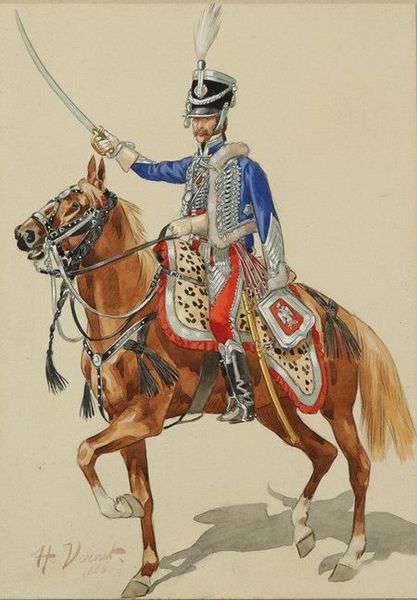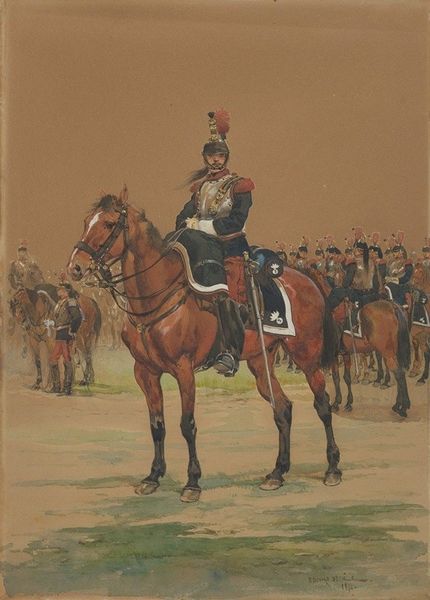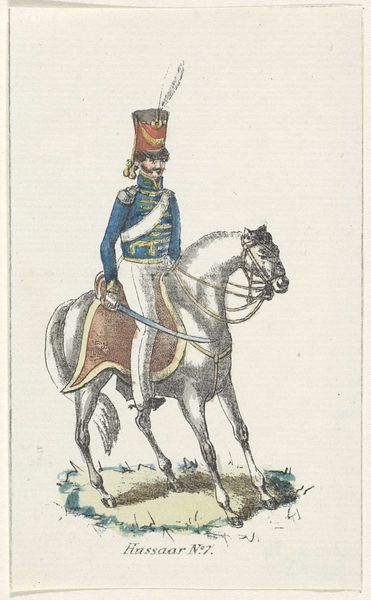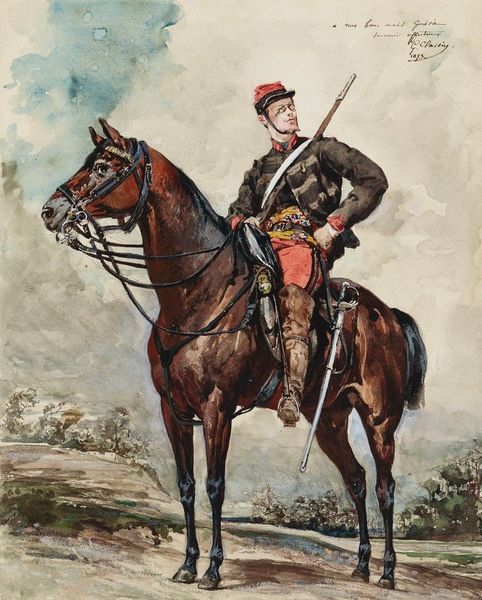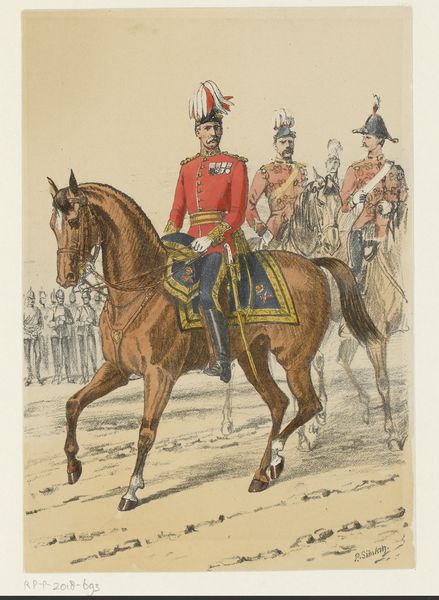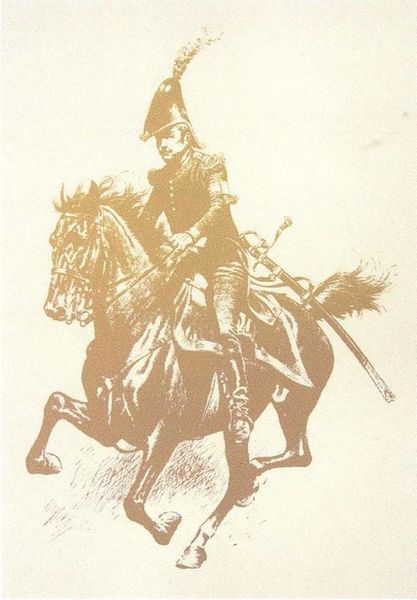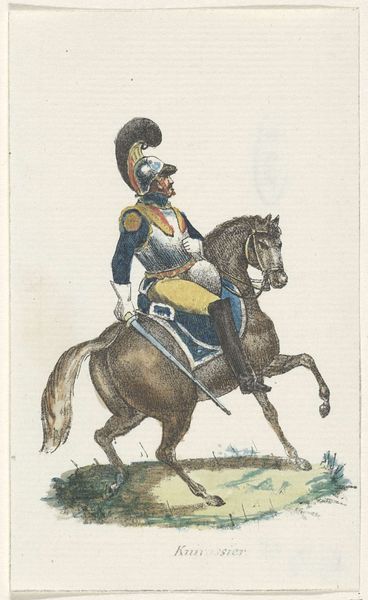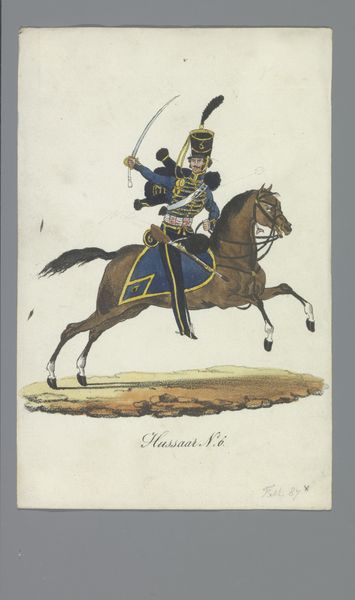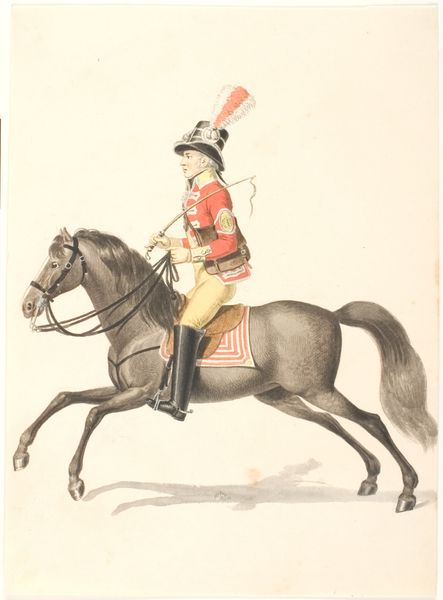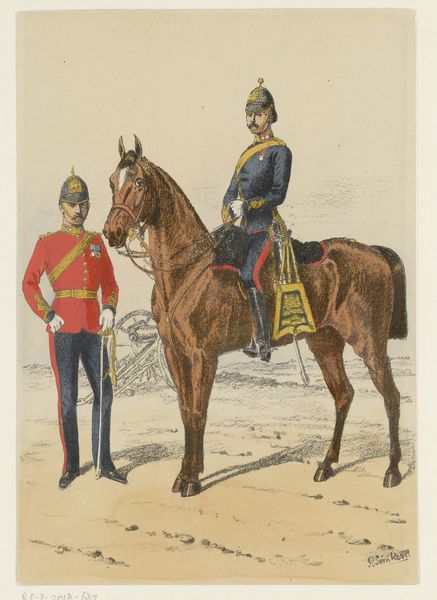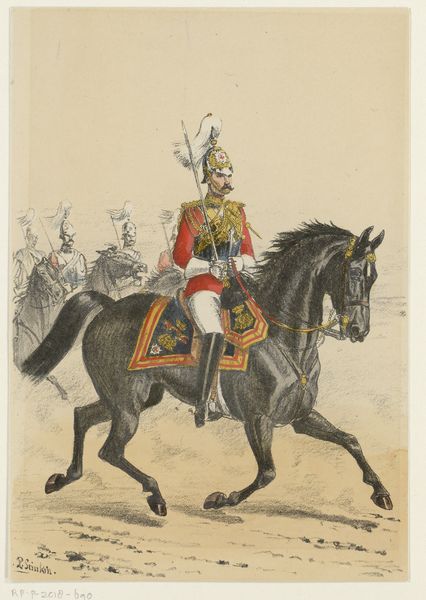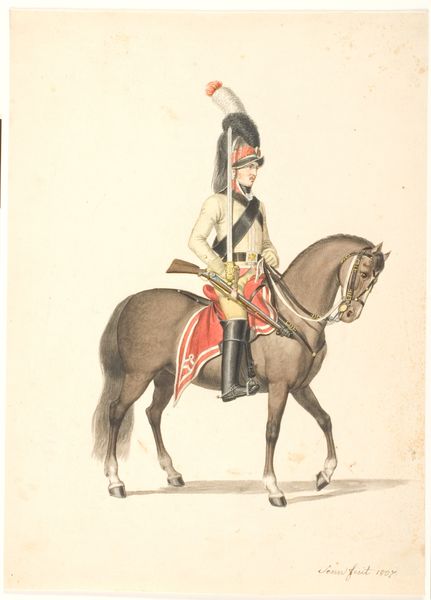
Copyright: Public Domain: Artvee
Editor: This is "Cuirassier" by Jean-Baptiste Édouard Detaille, a watercolor painting from 1872. There's such detail in the uniform and the horse's tack – but something about the solider's pose feels a bit staged, even romanticized. What strikes you about this piece? Curator: It's a seemingly straightforward military portrait, but it's essential to situate it within the context of the Franco-Prussian War, which had just ended. The meticulous depiction of the cuirassier, while seemingly celebrating military prowess, could also be read as a form of national mourning or an attempt to rebuild a bruised national pride. Notice how the horse is positioned behind the rider, partially obscuring the man. Who is he protecting, and what anxieties surrounding France's power on the global stage is the artist speaking to, do you think? Editor: I see what you mean. It's not just a depiction of power, it's a question about it. So, this level of detail, instead of just being realistic, might be an attempt to assert some sort of dominance, visually? Curator: Exactly! The intense focus on detail becomes a tool. By highlighting these objects and meticulously documenting the soldier, Detaille invites us to reconsider what this moment represents and who exactly has access to military strength. Consider also the power dynamics at play. Who typically has the power to control these narratives, and whose perspectives might be silenced? Editor: That makes me look at it completely differently. I was just seeing the surface. Curator: Art often operates on many levels. Asking these questions pushes us to consider not only the artist's intent but also the social and political landscape they navigated. Editor: I'm going to need to rethink how I look at all military art now! Curator: Wonderful! This painting provides ample material to reassess visual languages surrounding patriotism.
Comments
No comments
Be the first to comment and join the conversation on the ultimate creative platform.
